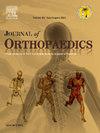结合术前预期和术后预期来预测膝关节手术后患者报告的结果
IF 1.5
Q3 ORTHOPEDICS
引用次数: 0
摘要
术前预期和术后预期均可独立影响患者报告的预后(PROs),然而,它们对PROs的综合影响尚不清楚。本研究旨在确定基于术前期望和术后满足期望对非关节置换术膝关节手术患者进行分类的预后意义。方法对2015年6月至2021年5月在某学术机构接受非关节置换术膝关节手术的638例患者进行分析。采用聚类分析,根据术前预期和术后两年达到预期评分对患者进行分组。形成了四个不同的期望簇组:术前高-高满足期望(high -high)、术前低-高满足期望(low -high)、术前高-低满足期望(high -low)和术前低-低满足期望(low -low)。基于集群组比较社会经济数据和PROs,并进行逻辑回归以确定基于集群组实现患者感知的“完全好转”状态的可能性。结果无论术前预期如何,与低预期患者相比,高预期患者报告的两年PROs更好。术前期望高的患者只有在术后达到预期时才能获得更好的结果。低术前期望并不妨碍患者获得良好的结果,只要这些期望得到满足。与LOW-HIGH组相比,HIGH-HIGH组获得完全更好状态的几率增加(OR = 1.68, p = 0.02), HIGH-LOW组(OR = 16.69, p <;.001), LOW-LOW组(OR = 5.17, p <;措施)。与LOW-LOW组相比,HIGH-LOW组获得完全更好状态的几率降低(OR = 0.31, p = 0.01)。结论满足预期可能比术前预期更能预测非膝关节置换术患者的术后预后。本研究强调了设定切合实际的术前期望和关注于实现术后期望的重要性。这些发现为临床医生根据个体特征和预期治疗结果有效管理患者期望提供了有价值的见解。本文章由计算机程序翻译,如有差异,请以英文原文为准。
Combining preoperative expectations and postoperative met expectations to predict patient-reported outcomes after knee surgery
Introduction
Both preoperative expectations and postoperative met expectations can independently influence patient-reported outcomes (PROs), however, their combined effect on PROs is not well understood. This study aimed to determine the prognostic significance of categorizing non-arthroplasty knee surgery patients into clusters based on both preoperative expectations and postoperative met expectations.
Methods
638 patients who underwent non-arthroplasty knee surgery from June 2015 to May 2021 at a single academic institution were analyzed. Patients were grouped based on both preoperative expectations and two-year postoperative met expectations scores using cluster analysis. Four distinct expectations cluster groups were formed: high preoperative-high met expectations (HIGH-HIGH), low preoperative-high met expectations (LOW-HIGH), high preoperative-low met expectations (HIGH-LOW), and low preoperative-low met expectations (LOW-LOW). Socioeconomic data and PROs were compared based on cluster group, and logistic regression was performed to determine the likelihood of achieving a patient-perceived “completely better” status based on cluster group.
Results
Patients with high met expectations, regardless of preoperative expectations, reported better two-year PROs compared to patients with low met expectations. Patients with high preoperative expectations achieved better outcomes only when those expectations were met postoperatively. Low preoperative expectations did not preclude patients from achieving good outcomes, as long as those expectations were met. The HIGH-HIGH group had increased odds of achieving completely better status compared to the LOW-HIGH group (OR = 1.68, p = .02), HIGH-LOW group (OR = 16.69, p < .001), and LOW-LOW group (OR = 5.17, p < .001). The HIGH-LOW group had decreased odds of achieving completely better status compared to the LOW-LOW group (OR = .31, p = .01).
Conclusion
Met expectations may be a stronger predictor of postoperative outcomes than preoperative expectations in non-arthroplasty knee surgery. This study highlights the importance of setting realistic preoperative expectations and focusing on achieving expectations postoperatively. These findings offer valuable insights for clinicians to manage patient expectations effectively based on individual characteristics and expected treatment outcomes.
求助全文
通过发布文献求助,成功后即可免费获取论文全文。
去求助
来源期刊

Journal of orthopaedics
ORTHOPEDICS-
CiteScore
3.50
自引率
6.70%
发文量
202
审稿时长
56 days
期刊介绍:
Journal of Orthopaedics aims to be a leading journal in orthopaedics and contribute towards the improvement of quality of orthopedic health care. The journal publishes original research work and review articles related to different aspects of orthopaedics including Arthroplasty, Arthroscopy, Sports Medicine, Trauma, Spine and Spinal deformities, Pediatric orthopaedics, limb reconstruction procedures, hand surgery, and orthopaedic oncology. It also publishes articles on continuing education, health-related information, case reports and letters to the editor. It is requested to note that the journal has an international readership and all submissions should be aimed at specifying something about the setting in which the work was conducted. Authors must also provide any specific reasons for the research and also provide an elaborate description of the results.
 求助内容:
求助内容: 应助结果提醒方式:
应助结果提醒方式:


